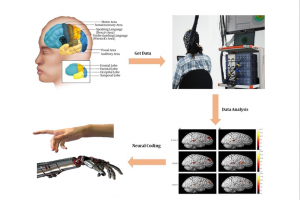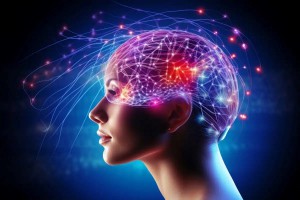Neurotransmitters and their role in the body
The nervous system processes sensory information and controls behavior by transmitting information both within cells and between cells. The main cells involved in information processing are neurons. The junction of one neuron with another neuron is called a synapse, through which neurons can transmit information to the next neuron.
The nervous system processes sensory information and controls behavior by transmitting information both within cells and between cells. The main cells involved in information processing are neurons. The junction of one neuron with another neuron is called a synapse, through which neurons can transmit information to the next neuron. In general, information is transferred electrically within neurons and chemically (through chemical synapses and by neurotransmitters) between neurons. (In addition to the chemical synapses that make up most synapses, there are electrical synapses that allow the flow of ions between cells).
A cell that releases a neurotransmitter to transmit a message to the next neuron is called a presynaptic neuron. After the neurotransmitters are released, the postsynaptic cell that contains the neurotransmitter receptors receives the information and again the information flows electrically in this neuron.
Otto Loewi discovered the first neurotransmitter in 1926. He showed that acetylcholine transmits a chemical signal from the vagus nerve to the heart that slows down the heart's rhythm. Neurotransmitters are produced by chemical reactions in neurons and are then released from the presynaptic neuron by exocytosis. After fusion with receptors located on the postsynaptic membrane or on the membrane of receptor cells, neurotransmitters are degraded on a femtosecond scale to allow the receptor to react with the next neurotransmitter. There are two degradation pathways, some neurotransmitters are recycled by the presynaptic neuron by endocytosis and the rest are degraded by enzymes.
Postsynaptic neurons can respond to neurotransmitters in an excitatory or inhibitory manner based on the types of receptors and neurotransmitters. In fact, stimulation of neuron and nerve impulses is associated with an increase in the electric charge inside the cell (depolarization) and the return of the cell to the resting state is accompanied by a decrease in the electric charge of the cell (repolarization). As a result, the neurotransmitters whose effect on the post-synaptic cell is the entry of more positive ions or the decrease of the entry of negative ions have a stimulatory effect. And the neurotransmitters have an inhibitory effect if they cause a decrease of positive ions inside the post-synaptic cell or an increase of negative ions. For example, glycine, GABA, and taurine are inhibitory neurotransmitters.
In this article, neurotransmitters are divided into eight groups based on their chemical structure and function, including indoleamine, catecholamines, choline, amino acids, peptides, purines, gases, and other neurotransmitters such as lipids.
Indoleamines and catecholamines form the group of monoamines. Indoleamines, which are widely found in plants, animals, and microorganisms, are mostly produced from the hydroxylation of aromatic amino acids in neurons.
5-Hydroxytryptamine (serotonin) is one of the main types of indoleamine that is produced by the hydroxylation of tryptophan. Serotonin has been found to have regulatory effects on mood, movement control, and memory, and insufficient levels of this neurotransmitter can lead to the onset of Parkinson's disease.
Serotonin is converted to 5-hydroxy indole acetic acid in light by monoamine oxidase enzymes, which is the waste product of this neurotransmitter. But in the dark, it turns into melatonin, which is a sleep-inducing molecule.
Histamine is another type of neurotransmitter in this group, whose abnormal concentration is one of the causes of Alzheimer's disease and several other cognitive disorders. The role of histamine and its receptors in some specific brain processes such as recognition and exploration of a new environment has been determined. In addition, according to studies, histamine is involved in the basic processes of recovery of brain function after injury.
Catecholamines are obtained from the hydroxylation of tyrosine. Catecholamines, which help adapt to acute and chronic stress, include dopamine, epinephrine (adrenaline), and norepinephrine (noradrenaline). Dopamine has a regulatory role in Parkinson's disease, movement, drug addiction, memory, and brain aging. Aside from regulating sleep and wakefulness, norepinephrine may also contribute to Parkinson's disease, depression, and anxiety. Adrenaline increases glucose supply and may be associated with Parkinson's disease, sepsis, and allergies.
Choline has many roles in the body, for example, it is a membrane component and it is active in things like brain development and improving memory ability, cell apoptosis, and coordinating neural networks in many areas of the brain related to learning and cognition. Abnormal choline concentrations are associated with many brain disorders such as depressive disorder, Alzheimer's disease, Parkinson's disease, and Huntington's disease. In neurons, acetylcholine is synthesized from choline and acetyl-CoA by the enzyme choline acetyltransferase.
Amino acids, which make up peptides and proteins, are another group of neurotransmitters. Gamma amino butyric acid (GABA), glutamate, glutamine, glycine, and aspartate are in this group. Abnormalities in brain amino acids play a role in various neuropsychiatric disorders such as sleep disorder, obsessive-compulsive disorder, autism, emotional disorder, and addiction. Excessive glutamate release or GABA stimulation may lead to seizures.
Glutamate, a common excitatory neurotransmitter in the nervous system, causes depolarization of target cells and is also associated with learning, memory and some neurological diseases. In addition, GABA and glycine are the most common inhibitory neurotransmitters in the brain and spinal cord and cause hyperpolarization of target cells. In addition to epilepsy, these amino acids also play a role in mood and anxiety.
Neuropeptides that are larger in size than other neurotransmitters usually act more slowly and have longer-lasting effects, such as prolonged changes in the number of neuronal receptors or long-term openings and closings of ion channels. This group consists of molecules that are released by the hypothalamus (like somatostatin), by the pituitary gland (like adrenocorticotropin hormone- ACTH), by the gut and brain (such as substance P, gastrin, and enkephalin), or by other tissues (like sleep peptides).
These neurotransmitters regulate various physiological functions of the body such as pain perception, sleep, mood, learning, and memory. In addition, the differentiation and development of the nervous system itself are regulated by neuropeptides. Several clinical studies have focused on the role of glutathione in various diseases, including Alzheimer's disease and Huntington's disease. Methionine-enkephalin is associated with motivation and pain. Finally, these peptides are fragmented by peptidase and undergo modifications.
Purines are nitrogen-containing heterocyclic compounds. Adenine and guanine are the main types of purine-containing nucleic acids. These substances play an important role in inhibiting the release of neurotransmitters. Some neurological diseases may be linked to low ATP concentrations. Adenine, which is a byproduct of ATP catabolism, modulates neurotransmission and the immune system, and its level is altered in many diseases, such as epilepsy and tumors.
Several different neurotransmitters do not fit into these neurotransmitter groups described, such as lipids and gases, including NO, H2S, and CO.
NO is an inhibitory neurotransmitter in the gastrointestinal tract that acts as a potent relaxant of gastrointestinal smooth muscle. H2S, as a physiological vasorelaxant, can mediate neurodegenerative diseases. CO is generally considered toxic because it binds to hemoglobin but it is also associated with inflammation and vasodilation. In addition, CO is one of the important neurotransmitters due to its potential impact on Alzheimer's disease.
In general, neurotransmitter receptors and other proteins involved in the synthesis and inactivation of neurotransmitters are critical targets for the development of drugs that are used to treat psychiatric and neurological disorders, pain, and many other diseases. In addition, natural substances such as cocaine, opiates, nicotine, alcohol, and LSD, which can mimic or interfere with the function of neurotransmitters, have strong effects on human behavior, so the study and precise measurement of these biomolecules is required for more information.





Related Posts